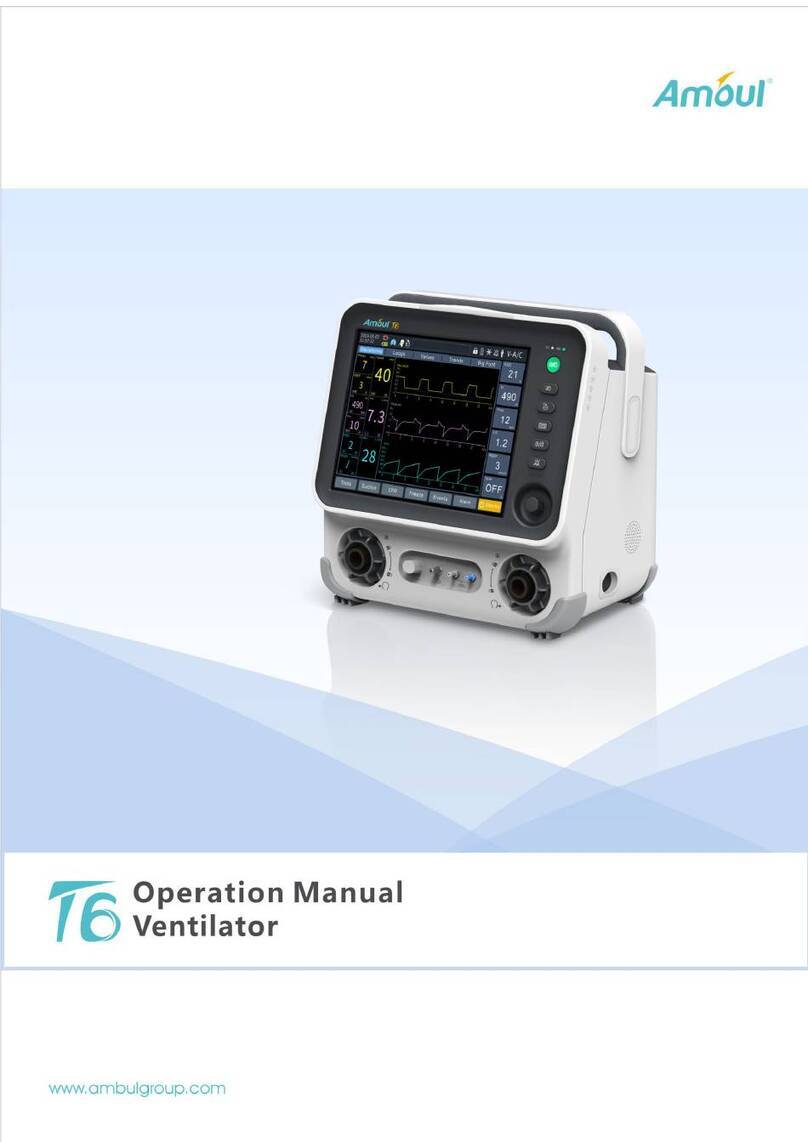
H-1.601.00024-A3.0
IV
Contents
1. The Basics ..................................................................................................................................1
2. Description..................................................................................................................................3
2.1 Uses.....................................................................................................................................3
2.2 Ventilation function ............................................................................................................3
2.3 Demand flow function.........................................................................................................4
2.4 Patient valve........................................................................................................................4
2.5 Audio response....................................................................................................................5
3. Safety instructions......................................................................................................................6
3.1 Safety regulations................................................................................................................6
4. Installation.................................................................................................................................10
4.1 Connecting the oxygen cylinder........................................................................................10
4.2 Ventilation hose ................................................................................................................11
4.3 Wall mounting set.............................................................................................................12
4.4 Please check as below advised carefully before using............................................13
5. Using the ventilator..................................................................................................................14
5.1 Switching on / self test......................................................................................................14
5.2 Selecting the ventilation settings.......................................................................................14
5.3 Performing ventilation ......................................................................................................15
5.4 Monitoring ventilation ......................................................................................................16
5.5 Demand Flow....................................................................................................................16
5.6 Terminating ventilation or Demand Flow.........................................................................17
5.7 Alarm signals ....................................................................................................................17
5.8 Audio response for user guidance.....................................................................................20
5.9 Calculation of oxygen content/remaining operating time.................................................22
5.10 Alternative ventilation procedures..................................................................................23
6. Hygienic preparation................................................................................................................24
6.1 AII6000A..........................................................................................................................24
6.2 Patient valve......................................................................................................................24
6.3 Ventilation hose ................................................................................................................24
6.4 Masks................................................................................................................................25
6.5 Fittings ..............................................................................................................................25
6.6 Cleaning and disinfection procedure.................................................................................25
7. Functional checks....................................................................................................................27
7.1 Intervals.............................................................................................................................27
7.2 Checking for leaks in the system.......................................................................................28
7.3 Checking the patient valve................................................................................................28
7.4 Checking the alarm systems..............................................................................................29
8. Troubleshooting........................................................................................................................31
9. Servicing....................................................................................................................................33
9.1 Intervals.............................................................................................................................33
9.2 Performing technical safety check and servicing..............................................................33
9.3 Battery...............................................................................................................................34
9.4 Change valve membrane in patient valve..........................................................................35
9.5 Storage ..............................................................................................................................35
9.6 Disposal.............................................................................................................................35
10. Product and accessories......................................................................................................36
10.1 Standard product.............................................................................................................36
10.2 Optional Accessories.......................................................................................................36
10.3 Consumables...................................................................................................................36
11. Technical data.........................................................................................................................37
11.1 Specifications..................................................................................................................37
11.2Product structure diagram................................................................................................38
11.3 Relationship between ventilation parameters..................................................................39
12. Warranty..................................................................................................................................40
13. Storage and transportation...................................................................................................41




























